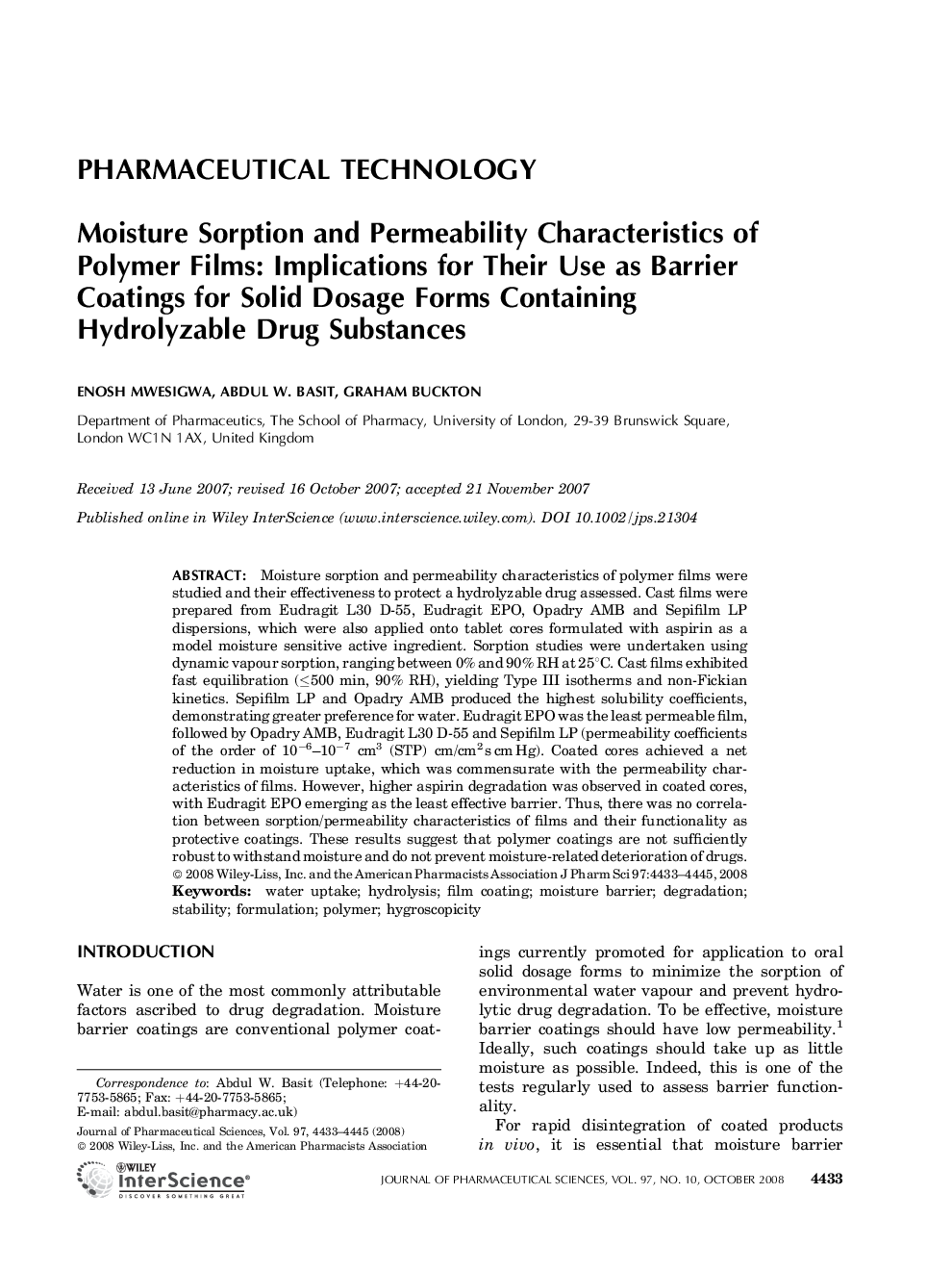| Article ID | Journal | Published Year | Pages | File Type |
|---|---|---|---|---|
| 2485341 | Journal of Pharmaceutical Sciences | 2008 | 13 Pages |
Abstract
Moisture sorption and permeability characteristics of polymer films were studied and their effectiveness to protect a hydrolyzable drug assessed. Cast films were prepared from Eudragit L30 D-55, Eudragit EPO, Opadry AMB and Sepifilm LP dispersions, which were also applied onto tablet cores formulated with aspirin as a model moisture sensitive active ingredient. Sorption studies were undertaken using dynamic vapour sorption, ranging between 0% and 90% RH at 25°C. Cast films exhibited fast equilibration (â¤500 min, 90% RH), yielding Type III isotherms and non-Fickian kinetics. Sepifilm LP and Opadry AMB produced the highest solubility coefficients, demonstrating greater preference for water. Eudragit EPO was the least permeable film, followed by Opadry AMB, Eudragit L30 D-55 and Sepifilm LP (permeability coefficients of the order of 10â6-10â7 cm3 (STP) cm/cm2âsâcmâHg). Coated cores achieved a net reduction in moisture uptake, which was commensurate with the permeability characteristics of films. However, higher aspirin degradation was observed in coated cores, with Eudragit EPO emerging as the least effective barrier. Thus, there was no correlation between sorption/permeability characteristics of films and their functionality as protective coatings. These results suggest that polymer coatings are not sufficiently robust to withstand moisture and do not prevent moisture-related deterioration of drugs. © 2008 Wiley-Liss, Inc. and the American Pharmacists Association J Pharm Sci 97:4433-4445, 2008
Keywords
Related Topics
Health Sciences
Pharmacology, Toxicology and Pharmaceutical Science
Drug Discovery
Authors
Enosh Mwesigwa, Abdul W. Basit, Graham Buckton,
